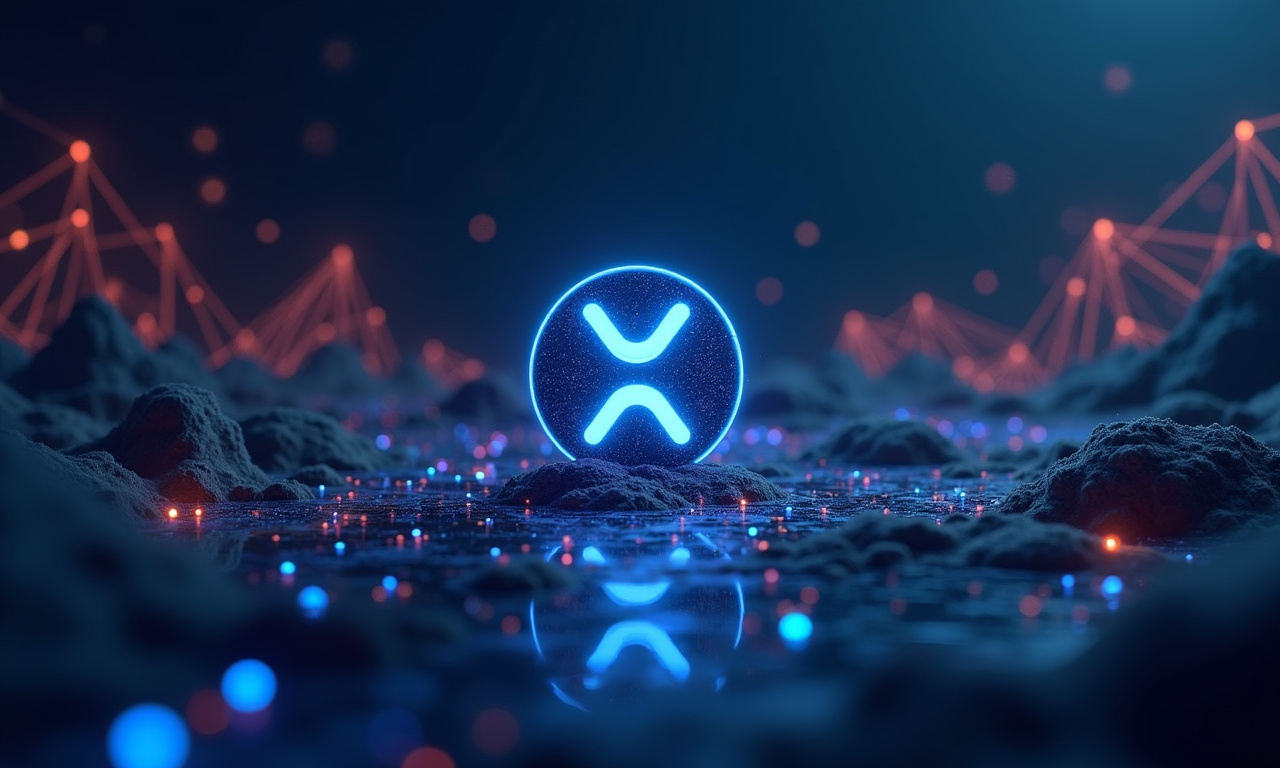
XRP, originally called Ripple, is a digital asset developed by Ripple Labs in 2012. Unlike Bitcoin, it is not dependent on mining in order to function. When it launched, all 100 billion tokens of XRP were pre-mined. This means that new tokens can no longer be generated as a result of mining operations. This core distinction influences not only how XRP is bought, traded, and held, but highlights its unique function within the larger cryptocurrency space.
In order to get the most out of XRP, you need to know what makes it different. Understanding its fast transaction speeds and role as a bridge currency are key to growing the love. Unlike traditional mining, getting XRP is done through things like liquidity mining, airdrops and actually buying the currency on an exchange. This article explores the specifics of XRP's tokenomics, offering a comprehensive overview of how it functions and how users can interact with it.
The Pre-Mined Nature of XRP
XRP’s biggest claim to fame is in being unique from other cryptocurrencies thanks mainly to its pre-mined nature. Back in 2012 when Ripple Labs released XRP, all 100 billion tokens were pre-mined. This method is a direct opposite to cryptocurrencies such as Bitcoin, which utilize a proof-of-work system to mine new coins gradually.
The choice to pre-mine all XRP tokens wasn’t naive or careless, it was strategic, designed to provide a fixed supply from the very beginning. This fixed supply helps ensure predictability and stability, as the total number of XRP tokens will never exceed 100 billion. Ripple Labs owns a substantial majority of these tokens. They deploy these tokens to fund development operations, incentivize adoption, and enhance the XRP ecosystem.
Without traditional mining, one can’t create new XRP through computational work. Rather, in order to use the platform, users have to obtain XRP through other means. They can purchase it on crypto exchanges or purchase it by joining liquidity pools. This pre-mined structure raises concerns about XRP’s distribution and the incentives to participate on its network.
Alternative Methods to Acquire XRP
XRP is not mineable, there are many methods to earn XRP. Liquidity mining, through airdrops and on exchanges are the only ways to get XRP. Read on to learn how each of these approaches provide unique opportunities and risks for would-be XRP holders.
Liquidity Mining
Liquidity mining is the practice of adding liquidity to decentralized exchanges (DEXs) typically by depositing two cryptocurrencies to create a trading pair. On XRP’s behalf, this usually means matching it against another cryptocurrency, like Bitcoin or Ethereum. As a liquidity provider, you not only help facilitate trades, but you earn a portion of the trading fees collected by the pool. That can offer a very attractive income stream, which makes liquidity mining a nice alternative for those who would like to get XRP tokens.
Liquidity pools typically require a 50:50 value split between the two cryptocurrencies. If you want to make $1,000 of liquidity available, you should collect $500 of XRP. Plus, you’ll need to have $500 of the other crypto on hand. The realized returns from liquidity mining are directly tied to the trading volume and therefore the fees that the DEX is able to generate. XRP’s super quick transaction processing time makes for effective use of deposits and withdrawals from these pools.
Airdrops
Airdrops are another way to acquire XRP. To entice new users to their services or reward existing holders, projects often provide free XRP tokens through various methods. These airdrops are like no-strings-attached giveaways, in which users get a modest amount of XRP just for signing up. If XRP is given through an airdrop it is virtually risk-free to acquire the asset, but it often involves receiving a paltry sum.
To ensure they’re eligible for these airdrops, users must typically hold XRP in a wallet that supports the asset. Or, they could sign up on an intentional community focused platform. Airdrops are an effective marketing tactic, as they allow new projects to quickly raise awareness and adoption of their services. Airdrops are the most simple and effortless method of getting XRP. Do not rest on your laurels! In any case, typical scammers will often try to steal your private keys or personal information.
Buying on Exchanges
The easiest and most secure method to obtain XRP is to buy it on the most trusted cryptocurrency exchanges. US crypto exchanges Ripple’s XRP The major exchanges Binance, Coinbase, and Kraken have all delisted trading pairs against the asset. Purchasing XRP on an exchange means you can get it straightaway, at the market rate.
When purchasing XRP on an exchange, keep exchange fees and market price fluctuations in mind. Here, it’s important to note that fees differ from exchange to exchange, so be sure to compare exchanges and find the most cost-effective option. Because market prices can change quickly, we recommend placing limit orders to purchase XRP at a predetermined price point. Adopt smart trading habits. Always check that the exchange you are trading on is legitimate and safe to protect your assets.
XRP's Functionality and Unique Features
XRP’s utility goes further than being yet another cryptocurrency. It’s known for its quick transaction times and minimal costs. Its use as a bridge currency further confirms its unprecedented status in the digital finance ecosystem. GETTING TO KNOW XRPL’S KEY FEATURES Understanding these features is key to grasping XRP’s value proposition.
One of XRP’s most attractive features has been its speed. Additionally, the XRP Ledger finalizes transactions in 3 to 5 seconds compared to Bitcoin or Ethereum’s approximate 10-minute transaction times. Because of this speed, XRP is a better fit for cross-border payments and other use cases where fast settlement is a priority. Another aspect that makes XRP an attractive alternative, particularly for high-volume transactions, is its low fees. Transactions over the XRP Ledger often cost less than a one cent, providing a low-cost and scalable alternative to today’s payment infrastructure.
Beyond being a currency, XRP is commonly used as a bridge currency, allowing payments in one currency to settle in another. It does this by allowing you to send a payment in one currency and receive it in another destination currency, often nearly instantly. XRP serves as the bridge currency to facilitate this. This ability makes transacting internationally much easier, as converting between currencies can be a slow, costly process. XRP’s utility as a bridge currency facilitates these transactions, allowing them to move quickly and efficiently.
In order for someone to activate a wallet on the XRP Ledger, they need at least 10 XRP in their wallet. This requirement serves two purposes: keeping spammers off the platform and making sure that only engaged users stick around on the network. A small amount of XRP, about 0.00001 units, is destroyed as a fee for each transaction to prevent network spam. This mechanism ensures that the XRP Ledger remains a secure and cost-effective means of transferring value.

Ellyna Juil
Blockchain Editor
Ellyna Juil is a boundary-breaking editor who combines a thorough analytical mindset with intuitive empathy to clarify the most complex blockchain topics for diverse audiences. Known for her strategic vision, dynamism, and commitment to inclusivity, she empowers both her team and readership to explore DeFi and crypto with clarity. Outside the newsroom, Ellyna enjoys Sabah’s mountain hikes and wildlife photography.
Related

ERC-20 Tokens Driving DeFi Innovation and Facing Scalability Challenges
ERC-20 tokens serve an important function for the decentralized finance (DeFi) ecosystem. Through a disparate array of applications, they catalyze innovation and economic growth. These tokens are built on the Ethereum blockchain, which is a decentralized platform. They serve as the backbone for most financial services like lending, borrowing, trading,...

Decoding the Digital Frontier: A Deep Dive into Coindesk's Crypto Influence
Coindesk is the world’s most trusted and influential cryptocurrency and blockchain news and event platform. It has quickly become the must-read for anyone seeking to get a handle on the fast unfolding age of digital assets. Established in 2013 by Shakil Khan, an early BitPay investor, Coindesk has grown into...

MetaMask Remains a Top Choice for UK Crypto Users in 2024
In the United Kingdom, MetaMask is still the most popular wallet among users. This empowers them to seek their place in the rapidly developing universe of Web3 and decentralized finance. MetaMask offers a powerful feature set and extensive compatibility. It’s a state-of-the-art all-in-one solution to store, manage, and interact with...